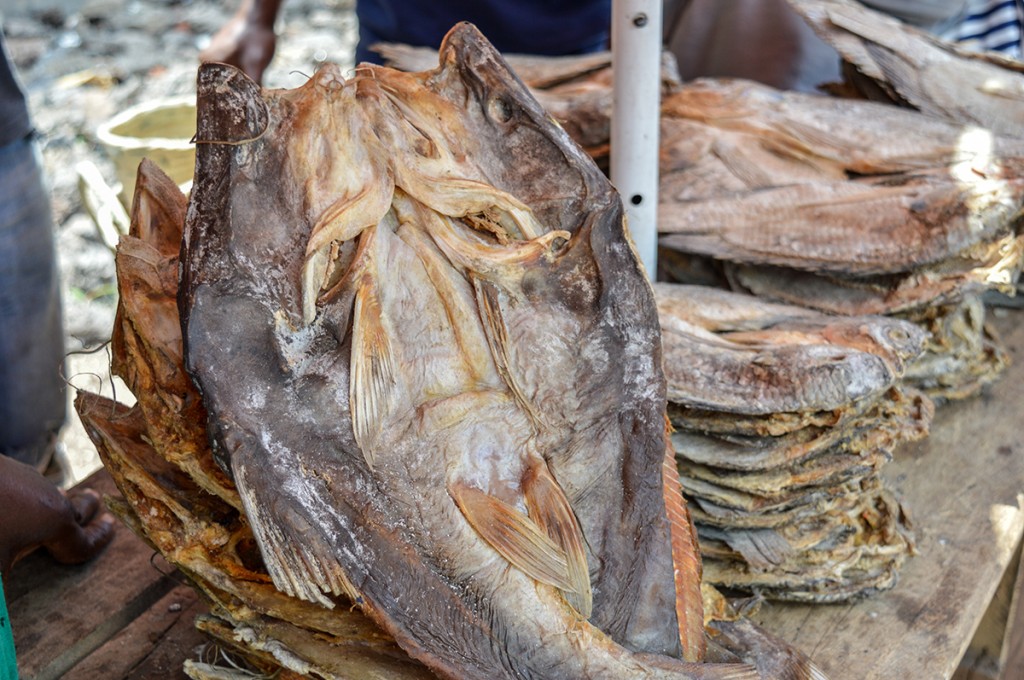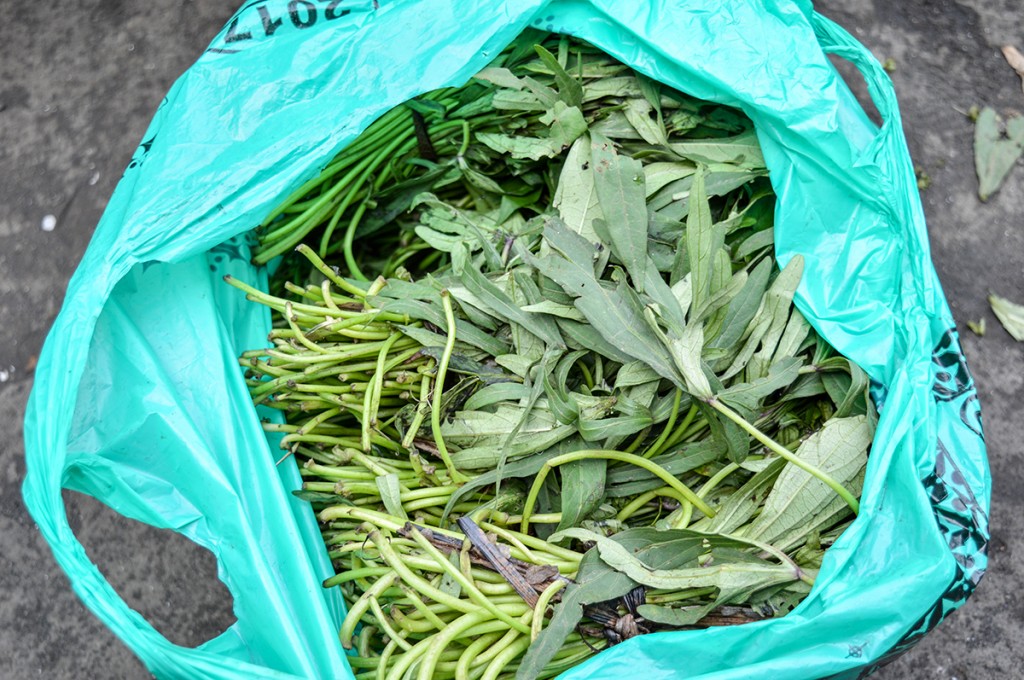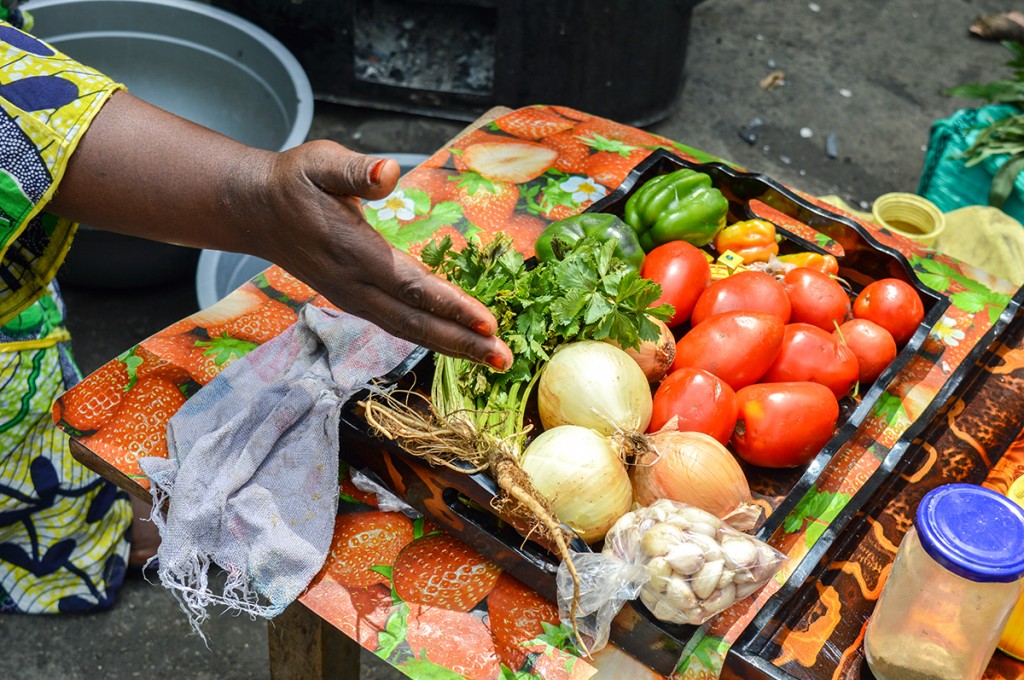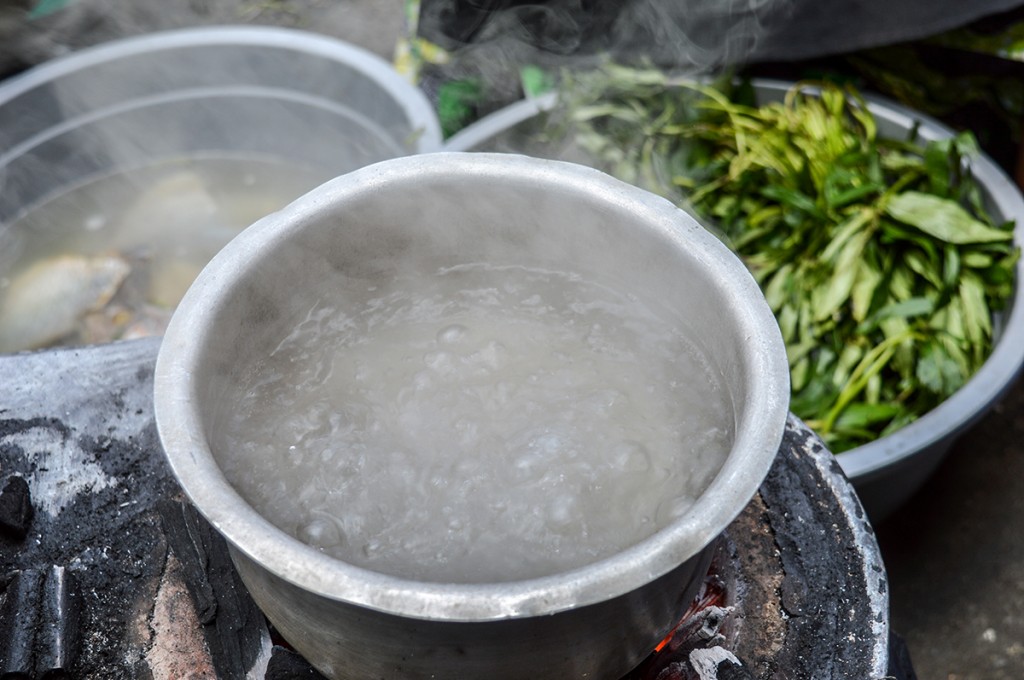
Mariam Aboubakar Esperance, GPJ DRC
Marie-Noëlla Muhindo Muhambikwa, 51, is the chef and restaurateur behind Chez Maman Noëlla, a restaurant located in the eastern region of the Democratic Republic of Congo, in the city of Goma. Aside from being a host for a number of radio and television cooking shows, Muhambikwa has volunteered her time to teach others the art of Congolese cuisine.
GOMA, DEMOCRATIC REPUBLIC OF CONGO — In households across DRC, diets center on vegetables. Potatoes and cabbage are common. But the king of Congolese vegetables is matembele, a leafy, spinach-like green.
Matembele is the Lingala word for sweet potato leaves. It’s found in many local gardens and is enjoyed daily by Congolese families across the nation.



Marie-Noëlla Muhindo Muhambikwa, a local journalist who hosts a cooking show on Radio-Télévision Nationale Congolaise (RTNC) in the North Kivu province, is known as the “Mistress of Culinary Arts”. The widow of a former chef, she started her kitchen as a fire pit on a dirt road in 1993. Today, she has a small restaurant, made of wooden slats and measuring 9 meters by 4 meters at the foot of Mount Goma. Locals, on average more than 50 per day, come to her restaurant, Chez Maman Noëlla, for her best dish: matembele.
Muhambikwa, 51, says good food is the key to happiness.
“I always advise young girls to cook well, like me, to ensure the happiness of their households,” she says. “The way a Congolese woman is valued depends on her cooking skills.”
Matembele is popular for its taste and its nutritional value, she says. It’s rich in vitamins A, B2, C, fiber and iron. The leaves are effective in relieving constipation and curing anemia, she says, adding she believes it works wonders for spinal tuberculosis, too.



Milo Prof, a customer at Chez Maman Noëlla, says matembele is everywhere in DRC. But it’s special at Muhambikwa’s restaurant.
“I’ve known the matembele from my childhood. It is widely consumed in our village. But this matembele, served here in the restaurant, tastes different,” he says, adding, “I wish my wife would come to learn from Marie-Noëlla.”
On a recent visit to the restaurant, Muhambikwa narrated her secret recipe for Global Press readers.
WHAT YOU NEED
Chopping board
Large bowl
Saucepan
Cooking pot with a lid
Wooden spoon
INGREDIENTS
2 ¼ (17 ounces) water
3 or 4 bunches matembele, or sweet potato leaves. If desired, use beet greens or collard greens as a substitute for matembele.
3 pieces of dried and salted cod
½ cup (4 ounces) palm or peanut oil
2 white onions, finely chopped
4 Maggi Seasoning cubes (available on Amazon)
1 sweet pepper, finely chopped
1 piece of ginger, grated
8 tomatoes, finely chopped
15 garlic cloves, grated
1 tsp. nutmeg
HOW TO COOK MATEMBELE
1. Place the fish in cold water to dilute the salt. After soaking for 2 hours, the fish should be set aside in a cloth to dry.
2. Wash the matembele thoroughly, and quickly blanch in boiling water.
3. Cut the leaves of the matembele into bite-size pieces and dry them in the sun for three hours to remove any sap. If the weather is bad, or if you are cooking inside, sauté them in a separate saucepan using cooking oil for 8 to 10 minutes.
4. Toast the previously-washed fish with peanut or palm oil in a saucepan over medium heat until the fish is lightly browned.
5. At the same time, begin the sauce. In a pot over medium-low heat, add the white onions, pepper, tomatoes and ginger, Maggi cubes, nutmeg and oil to cook for 15 minutes. Allow the sauce to simmer on low heat until a red-orange color has been achieved (about 10 minutes).
6. When the sauce is ready, add the matembele leaves to the mixture and stir.
7. Add the fish and water, and cover the pot to bring the mixture to a boil for 15 minutes.
8. Prepare your accompanying dish of choice. Rice, fufu or plantains are often used to accompany the matembele.
9. When it’s ready, gather around the table to savor the genius of Congolese cuisine!
Recipe note: Matembele is best served with fresh or smoked fish and fufu, a doughy mixture of cassava or maize flour and water. Because matembele is often served with salted cod, or makayabo, she cautions against over-seasoning with salt.
























